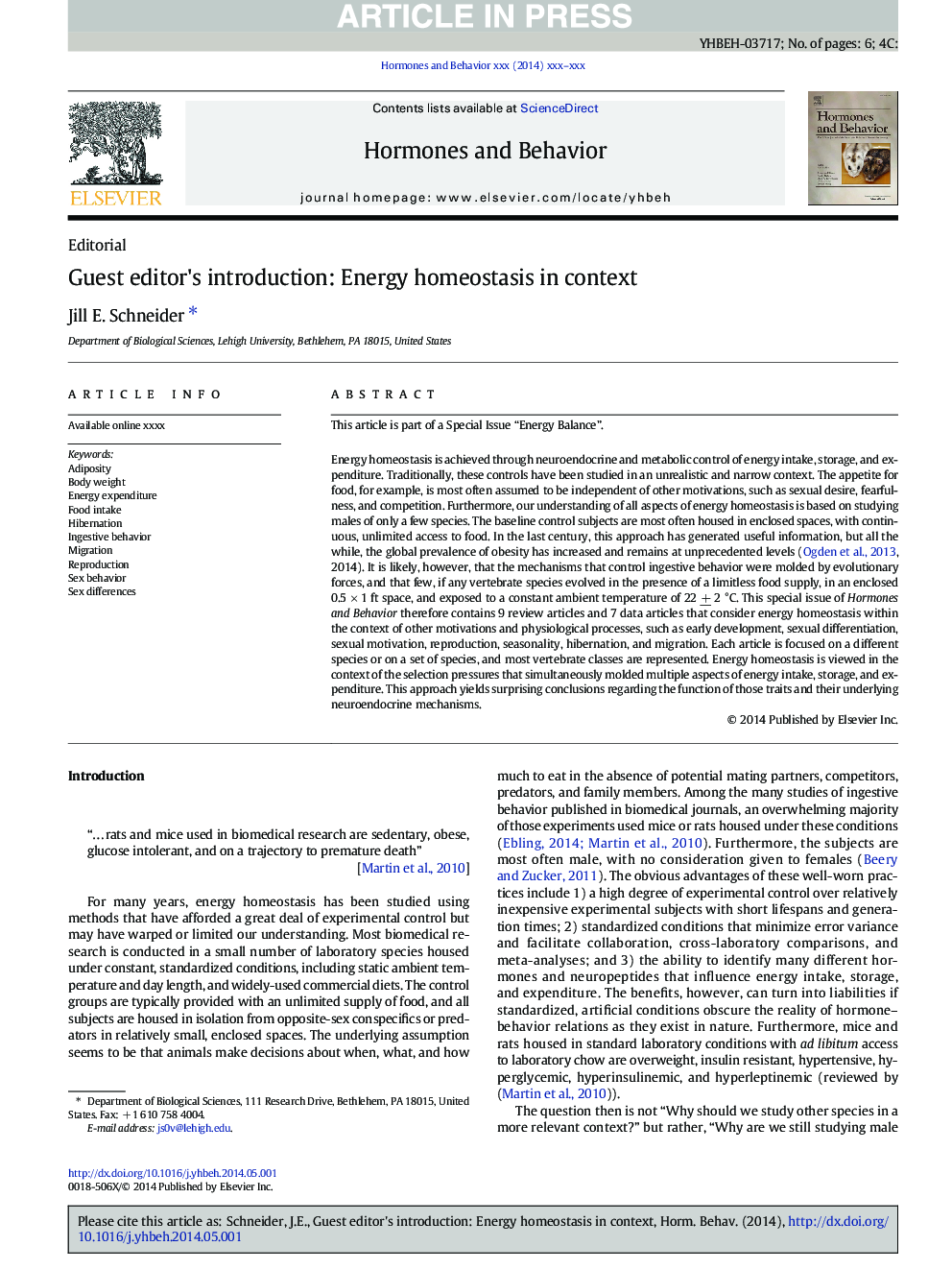| کد مقاله | کد نشریه | سال انتشار | مقاله انگلیسی | نسخه تمام متن |
|---|---|---|---|---|
| 10301463 | 540854 | 2014 | 6 صفحه PDF | دانلود رایگان |
عنوان انگلیسی مقاله ISI
Guest editor's introduction: Energy homeostasis in context
ترجمه فارسی عنوان
معرفی سردبیر مهمان: هومئوستاز انرژی در زمینه
دانلود مقاله + سفارش ترجمه
دانلود مقاله ISI انگلیسی
رایگان برای ایرانیان
کلمات کلیدی
چاقی وزن بدن، هزینه انرژی، مصرف غذا، خواب زمستانی، رفتار بدبینانه، مهاجرت، تولید مثل، رفتار جنسی، تفاوت های جنسی،
موضوعات مرتبط
علوم زیستی و بیوفناوری
بیوشیمی، ژنتیک و زیست شناسی مولکولی
علوم غدد
چکیده انگلیسی
Energy homeostasis is achieved through neuroendocrine and metabolic control of energy intake, storage, and expenditure. Traditionally, these controls have been studied in an unrealistic and narrow context. The appetite for food, for example, is most often assumed to be independent of other motivations, such as sexual desire, fearfulness, and competition. Furthermore, our understanding of all aspects of energy homeostasis is based on studying males of only a few species. The baseline control subjects are most often housed in enclosed spaces, with continuous, unlimited access to food. In the last century, this approach has generated useful information, but all the while, the global prevalence of obesity has increased and remains at unprecedented levels (Ogden et al., 2013, 2014). It is likely, however, that the mechanisms that control ingestive behavior were molded by evolutionary forces, and that few, if any vertebrate species evolved in the presence of a limitless food supply, in an enclosed 0.5 Ã 1 ft space, and exposed to a constant ambient temperature of 22 + 2 °C. This special issue of Hormones and Behavior therefore contains 9 review articles and 7 data articles that consider energy homeostasis within the context of other motivations and physiological processes, such as early development, sexual differentiation, sexual motivation, reproduction, seasonality, hibernation, and migration. Each article is focused on a different species or on a set of species, and most vertebrate classes are represented. Energy homeostasis is viewed in the context of the selection pressures that simultaneously molded multiple aspects of energy intake, storage, and expenditure. This approach yields surprising conclusions regarding the function of those traits and their underlying neuroendocrine mechanisms.
ناشر
Database: Elsevier - ScienceDirect (ساینس دایرکت)
Journal: Hormones and Behavior - Volume 66, Issue 1, June 2014, Pages 1-6
Journal: Hormones and Behavior - Volume 66, Issue 1, June 2014, Pages 1-6
نویسندگان
Jill E. Schneider,
